WE TEST THE 2005 SUZUKI RM85L
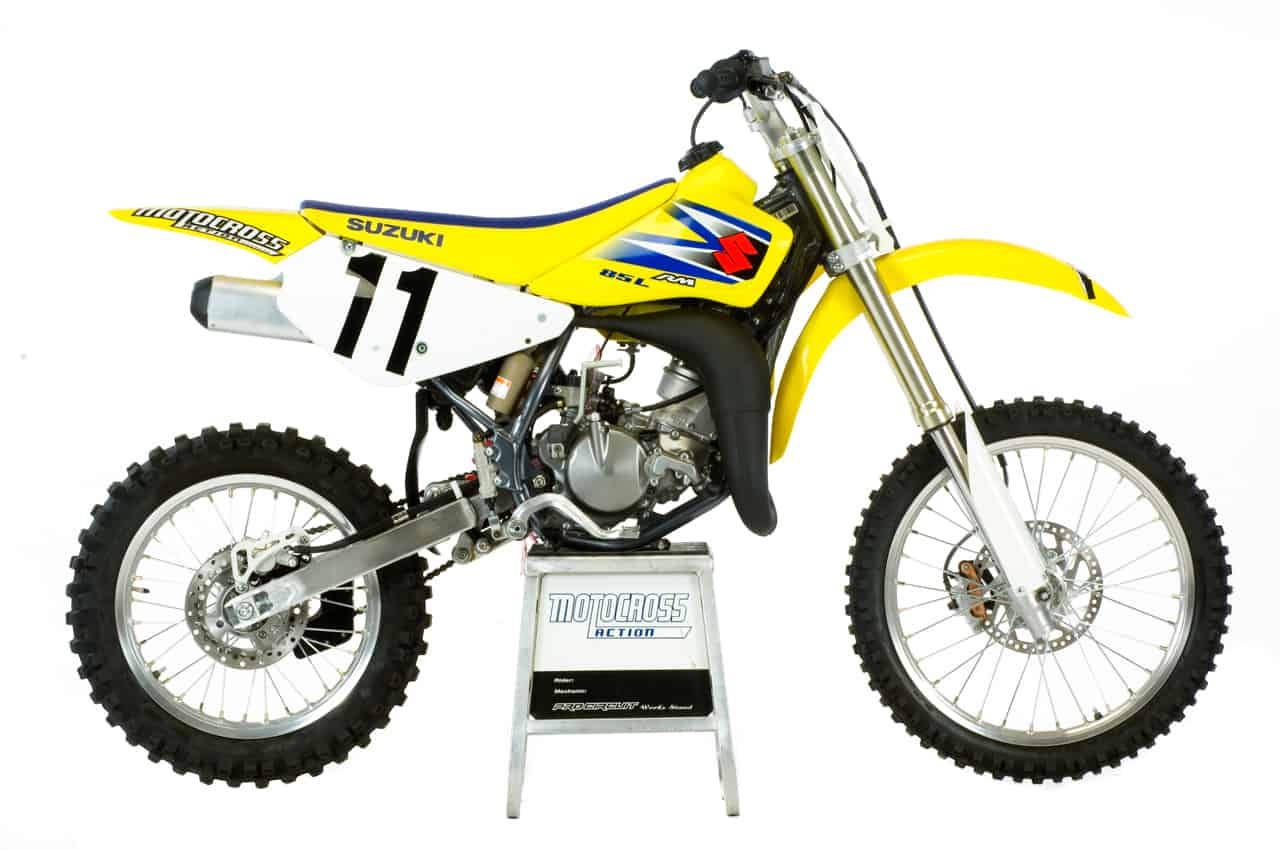
2005 Suzuki RM85L.
This bike test is from the April 2006 issue of MXA.
The RM85 minicycle is a staple in Suzuki’s amateur racing success. Most recently, riders like Davi Millsaps, Nico Izzi and Blake Wharton have taken the yellow mini to major championships. However, while all of these kids are constantly growing (especially Davi), their trusty minicycles aren’t. This leaves many youngsters struggling on bigger and more powerful 250F four-strokes or feeling mammoth on their minis.
There is a solution. The answer is the “Big Wheel.” In Suzuki’s case, they put an “L” designation after the RM85 to make an RM85L. The “L” denotes that it is a big wheel, but it’s easily recognizable by the larger wheels and increased ground clearance. The RM85L is designed for a larger 85 rider who is trying to transition to a 250F.
RM85L STRENGTHS
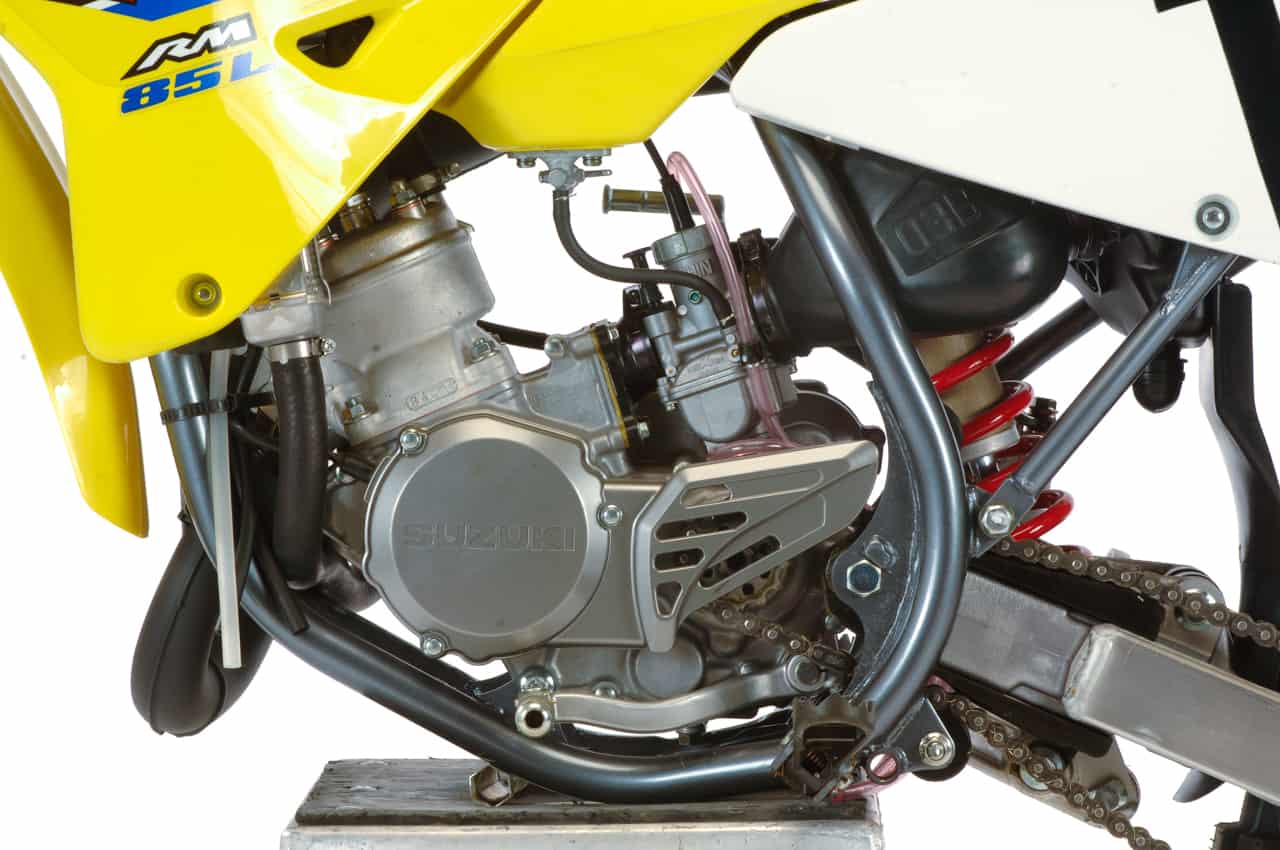
Differences: Before highlighting the strengths of the yellow rocket, it’s useful to mention the difference between the RM85 and the RM85L. In place of a 17-inch front tire and 14-inch rear, the L has a 19/16 combo (along with a one-inch seat height difference). The overall height has been increased by 2.6 inches, ground clearance by an inch, and weight by nine pounds.
Powerband: Why is the RM85L such a good bike? Its younger brother, the RM85, is a winner. The “L” houses the same power plant, frame and suspension. MXA test riders raved about the usable powerband. The low to midrange hit was abrupt and powerful; a trait that is demanded by minibike racers. Luckily, the bike is designed for larger kids, because the powerband is not for the faint of heart. At the same time, one snap of the throttle and any kid, from Billy Beginner to Robby Racer, will enjoy the ample power. It’s not a matter of how fast the RM85L goes, it’s a matter of how fast you want it to go. We like that. Top-end overrev is not the strongest part of the engine, but it still barks before signing off.
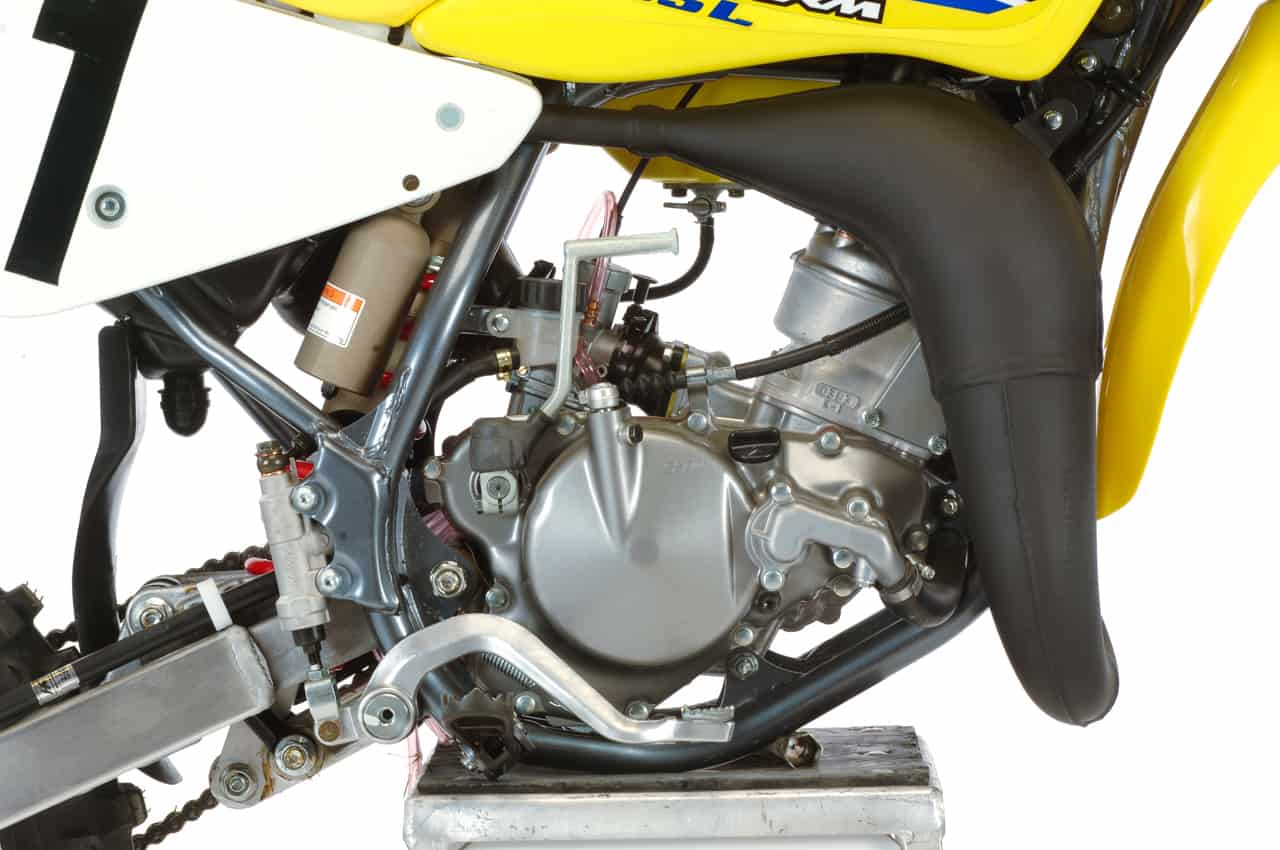
Handling: The RM85L’s engine wasn’t a surprise for any of the MXA test riders. After all, it’s the same engine that the smaller RM85 carries. What made test riders gleeful was the way that the “L” version handled bumps and G-outs. Minicycle riders normally have to get their weight to the back of the bike and hold on for dear life over big bumps on the RM85. That is not the case when riding the “L”. Why? It’s all in the wheels. The increased wheel size covers a greater surface area, which in turn allows the bike to roll over bumps instead of getting swallowed up. Test riders also noted that the RM85L was very stable at high speeds, giving them confidence to hold the throttle on longer entering corners and across whooped out straights.
Ergos: Typically, when a manufacturer decides to offer an upsized version of an existing model, they forget the nuances that changing the wheels will cause. Not Suzuki. There are no ergonomic woes or braking problems, because the RM85L shines in many of the right places.
RM85L WEAKNESSES
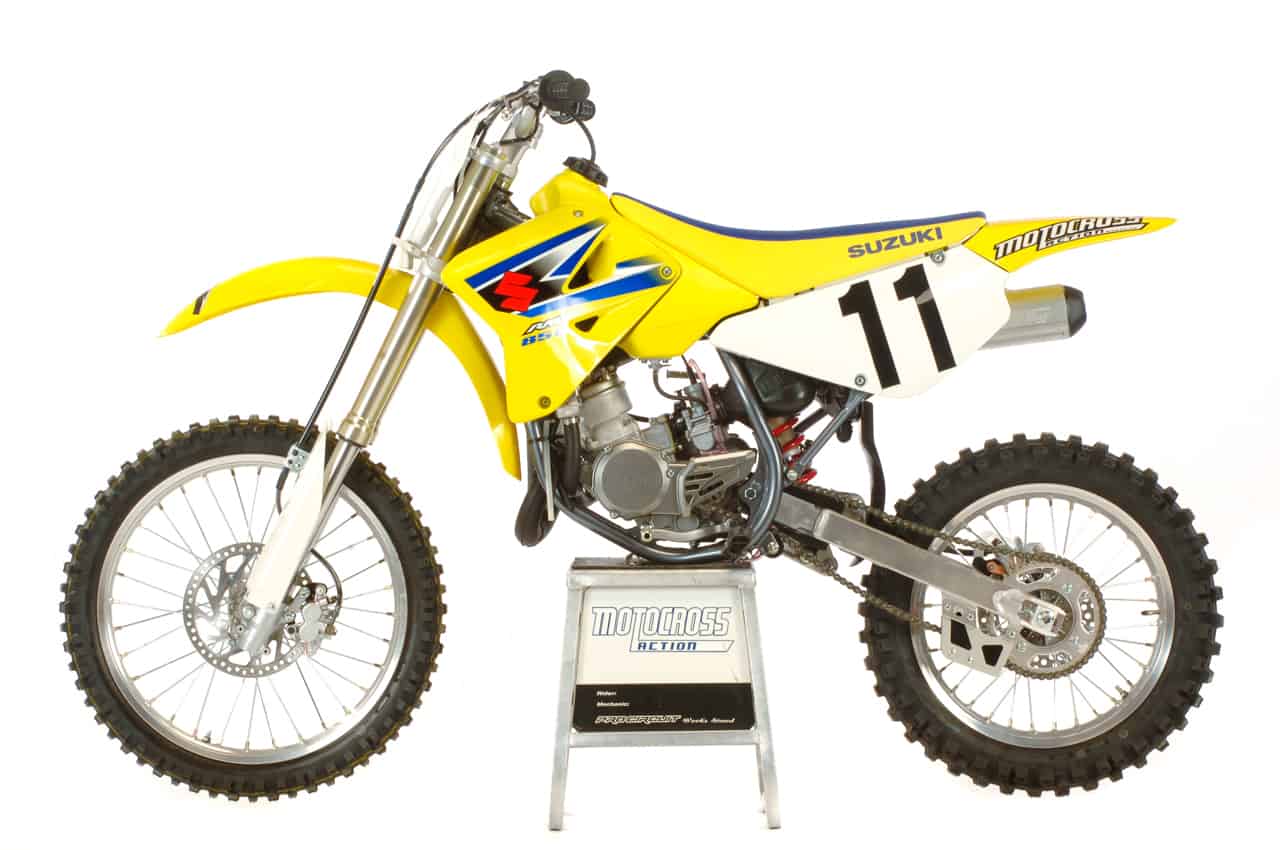 Springs: The number one test rider complaint with the RM85L was that the suspension was too stiff. However, depending on how fast Junior is growing, he might find the forks and shock to his liking. Beginner and Novice racers will want to opt for softer settings to soak up the bumps, while Experts get along just fine with the stock settings. If every mini rider in the world exhibited Expert-like speed, we wouldn’t complain about the forks and shock–but that is not the case.
Springs: The number one test rider complaint with the RM85L was that the suspension was too stiff. However, depending on how fast Junior is growing, he might find the forks and shock to his liking. Beginner and Novice racers will want to opt for softer settings to soak up the bumps, while Experts get along just fine with the stock settings. If every mini rider in the world exhibited Expert-like speed, we wouldn’t complain about the forks and shock–but that is not the case.
Cornering: It shouldn’t come as a surprise that several MXA test riders complained about turning issues on the big wheel. The larger wheels, raised seat height and ground clearance make the RM85L feel bloated compared to the svelte RM85 mini. Turn initiation is harder for small riders, and several test riders felt that the bike wasn’t as easy to manhandle as the smaller model. Taller test riders had no complaints and loved the extra room for their legs in ruts and tight turns.
WHAT DO WE THINK?
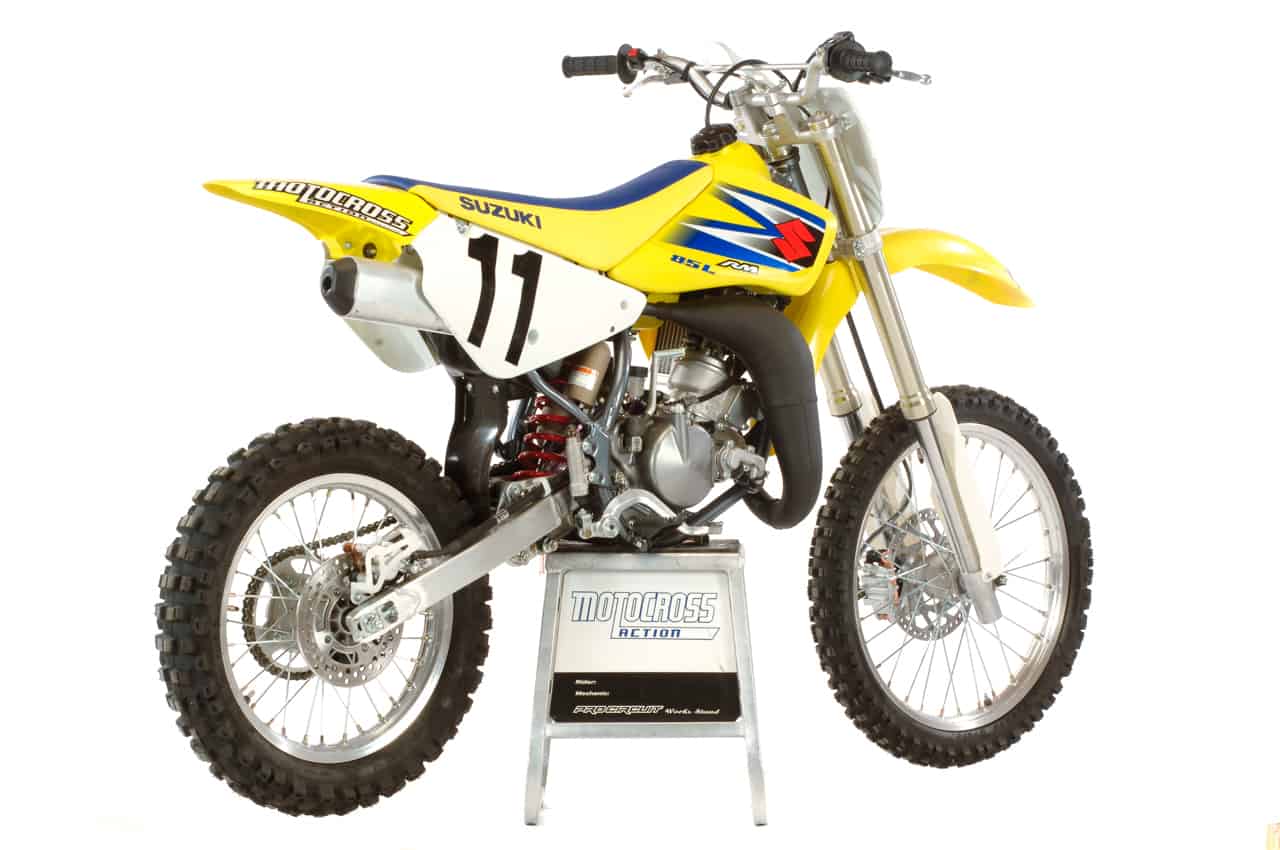 The RM85L is as cool as the other side of the pillow. It’s the perfect fit for any mini-rider trying to make the transition to big bikes. The “L” does a great job of making an otherwise big step easier. Obviously, the big wheels take the RM85L out of the normal milieu of minicycle classes–forcing it into the “Big Wheel” class, but that is the way of the world with transition machines. If you are too big for a mini, but too small for a 250F—this is a chance to wet your beak while waiting for the growth hormones to kick in.
The RM85L is as cool as the other side of the pillow. It’s the perfect fit for any mini-rider trying to make the transition to big bikes. The “L” does a great job of making an otherwise big step easier. Obviously, the big wheels take the RM85L out of the normal milieu of minicycle classes–forcing it into the “Big Wheel” class, but that is the way of the world with transition machines. If you are too big for a mini, but too small for a 250F—this is a chance to wet your beak while waiting for the growth hormones to kick in.






Comments are closed.